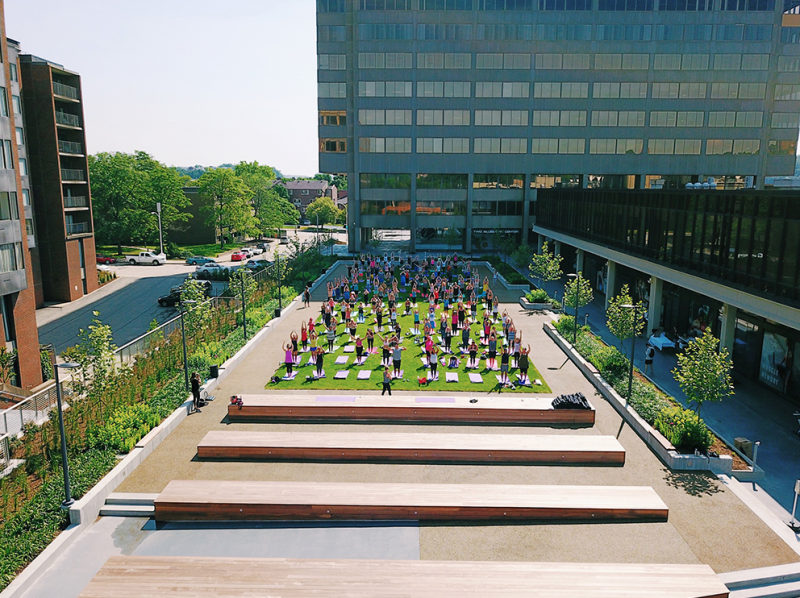
As most people reading this already know, I made a professional transition in October. I was a strength coach for two decades, but an unexpected opportunity arose, and I took it.
Since October, I’ve been the general manager of Union Fitness. I was very lucky to take over this position because I was able to replace a good friend of mine (as he transitioned to running his own business), and the parent company is very supportive and wants us to be part of a great community. I was also able to come on board with a great staff already in place, as well as the ability to add additional staff.
One of the people I leaned on heavily when I arrived was Curtis Miller. If you don’t know Curtis, you should! When I began at Union, Curtis was the director of personal training. I didn’t like his title because it didn’t reflect what he did for Union. We rewrote Curtis’s job description and changed his title to director of customer engagement. This new title gives Curtis the ability not just to oversee personal training but also to make sure that people are in the correct roles within our facility.
To understand this role, you must understand that we have a one-of-a-kind facility. We have 50 competitive powerlifters, a handful of athletes, and a few hundred general fitness members, as well as a class program that attracts about 200 training hours per week. So, our offerings truly run the gamut.
I took what I knew from strength and conditioning in terms of building a team, and I went to work here at Union Fitness. In the first couple of months, I didn’t do much more than watch. Now, I’m implementing more of what I believe will help us to grow. I’m also listening to those who did the job before I arrived. This brings us back to Curtis. I wanted to know the similarities between college coaching and private sector training, so I asked Curtis to write out his rules of personal training.
Here they are in Curtis’s words:
1. Build and Establish a Relationship
One of the first things you need to do as a personal trainer is to establish healthy relationships with your clients. By no means do you need to be friends with them, but you should make them feel extremely comfortable with working with you. Depending on how often you’ll be working with them, you’ll be seeing them anywhere from one to five or more days per week in addition to having daily contact via email or text. The better the relationships are between the individuals, the higher the likelihood of success and continued partnerships.
2. Earn the Client’s Trust
This goes hand in hand with building a relationship. It’s hard to have one without the other. Once you’ve established a good trainer-client relationship, you need to earn the client’s trust. Sometimes this happens simultaneously, and sometimes it happens before the process of building a relationship. That really depends on the client and his or her level of comfort with the trainer. Regardless, you need to give the client reasons to trust you. This is about the client. Help him or her to see a difference, and he or she will be loyal to you. Until you do this, your connection will never be as strong as it could be.
3. Listen to Your Clients, and Understand Their Needs
Being the professional, you have the final say in what you’ll be doing with each client. However, it’s absolutely necessary that you listen to everything that each individual has to say. You may think you know what’s best for the client, but you aren’t living inside of his or her body, nor can you feel what the client is feeling or what he or she is thinking. This is where communication is crucial. Listen to what your clients have to say and what they’re feeling. If they’re being very vague, ask them questions until you get what you’re looking for. From there, figure out what is best for them at that time. You may have plans that are set in stone, but things change, and you need to be able to adapt to suit their needs.
4. Teach Your Clients
For the most part, the majority of clients want to learn what they’re doing and how it’s benefiting them. I’ve worked with quite a few people who simply want to sweat for an hour and just be told what to do. Although that’s fine for some people, our goal should always be to properly educate all individuals whom we work with. Keep in mind that with personal training, you’ll mainly work with the general population and elderly individuals. They don’t care about their 40-yard dash time or their 225-pound bench press max reps test. They need to move better and be healthier, both physically and mentally. Every day, you should give them one piece of information that can help them in their daily lives.
5. Don’t Over-Coach
This is something that I found myself doing a little too much when I first got into the industry. It’s always good to read articles, studies, and books, but don’t regurgitate information that you learn just for the sake of trying to sound like you know your sh*t. The majority of people have trouble doing a body weight squat correctly. Don’t overload them with information that will make them frustrated. Before they come in for their sessions, pick one or two things that you want them to focus on for that day. Unless it’s something else that will risk injury, it can wait for another day. They don’t have a competition that they need to prepare for in two weeks. They are in this for the long haul. Slow and steady wins in the game called life.
6. Bring Yourself Down to the Client’s Level
This is something I picked up from JL Holdsworth while he was speaking at the last elitefts summit: “Bring yourself down to their levels, and meet them in the middle.” As professionals, it’s important to understand that we know much more than 99 percent of the individuals we’re going to work with. For most of us, we’ve also been training for a long enough period that we understand what it feels like to struggle and push ourselves. Many of these individuals may have never experienced this type of challenge. Instead of being a cheerleader and shouting things like “C’mon, you got this! You can do it,” bring yourself down to meet them and work with them to get up with you.
7. Show your Clients Progress
It’s important to understand that progress comes in many forms. It isn’t always about how much weight is on the bar or the number that’s on the scale. If these are their main priorities, then by all means, focus on them. But understand that there will be times when their progress completely stalls and they get frustrated. To prevent this, show them that they are still continuing to progress even when they don’t realize it. This can come in the form of having better technique, performing a more challenging exercise with success, hitting repetition and set personal records, or taking shorter rest periods. By proving to them that they’re continuing to make progress even when they’re feeling down, they will always trust you and stay loyal to you for years to come.
MORE: Hybrid Memberships are the New Normal
Whether you’re a coach, personal trainer, or any other person who works with people in a gym setting, these rules can apply to you. I found Curtis’s list to be interesting because I do believe it would hold water in most settings where you work with clients. This brings me back to something I’ve asked many people before: If you’re a college strength coach, who is your client? Is it the coach, the athlete, or the university?
In the private setting, this is easy to answer. It’s the person paying your bills. The client in many ways is the boss, and it’s our job to manage this relationship while pushing the client to excel. For you college coaches, I don’t know what to tell you because the system doesn’t clearly define who the client is. What I can say to the college crowd is be true to your job, and when in doubt, do what is right by the athlete and no one else.











